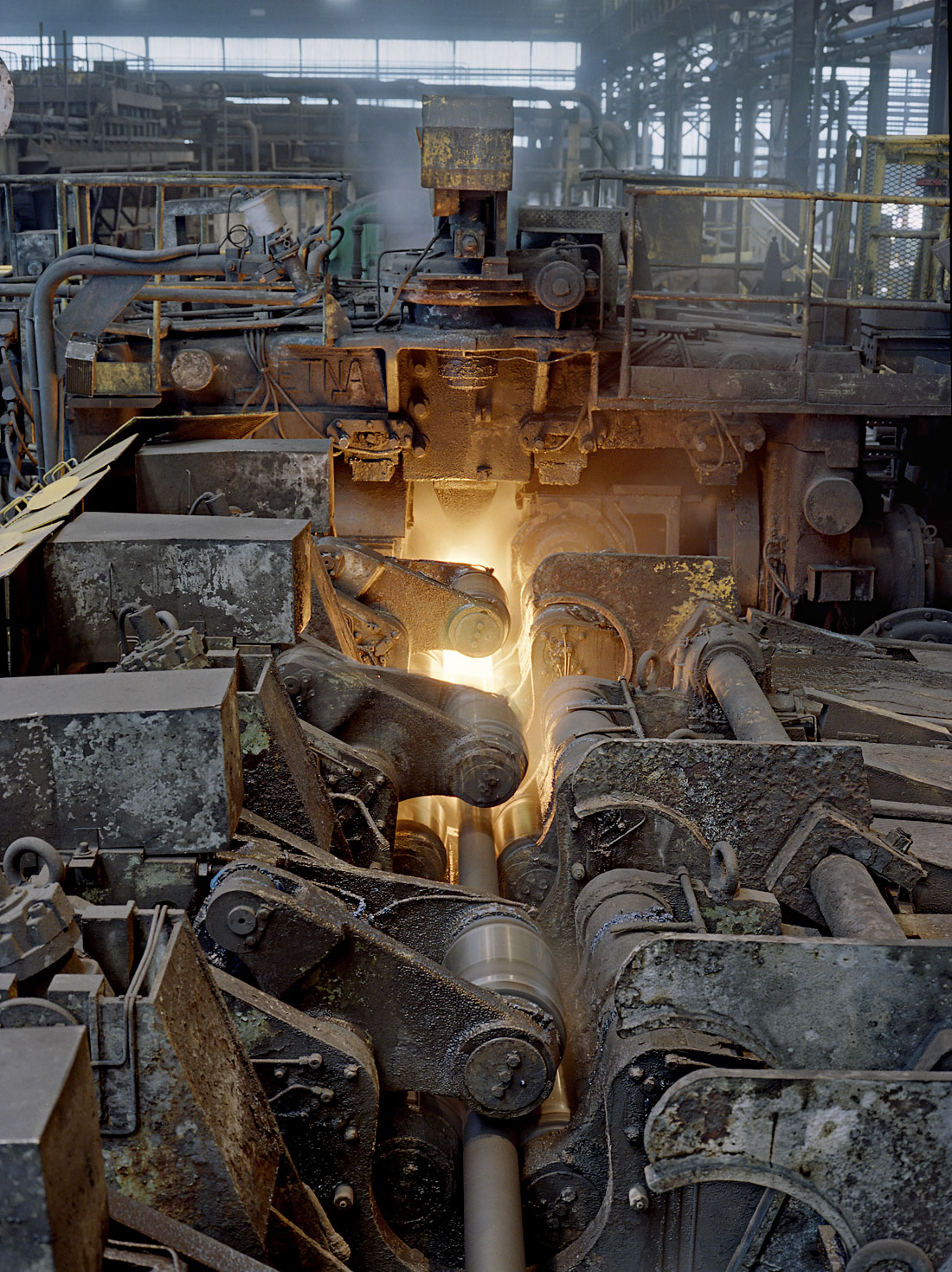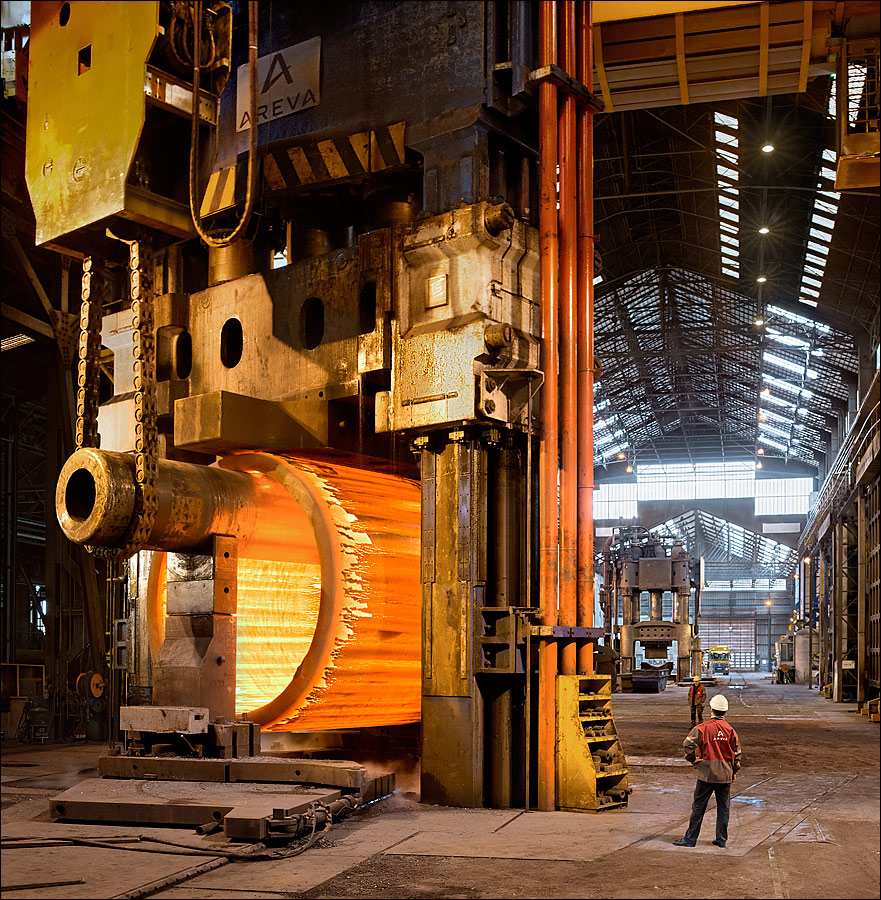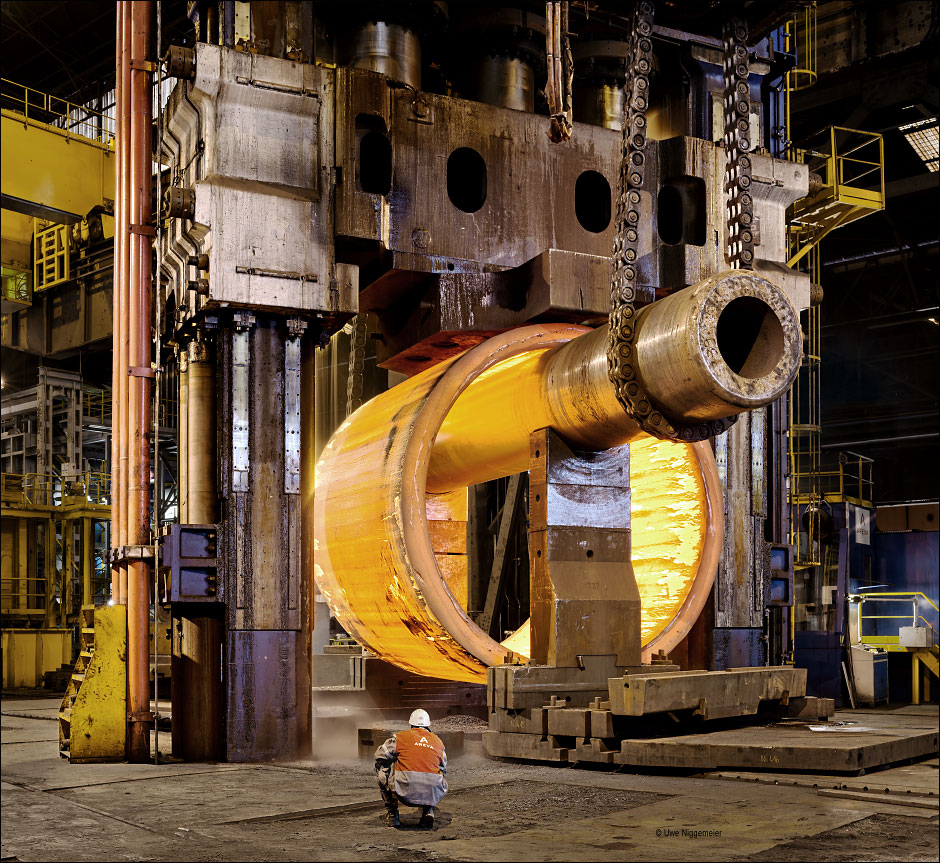Since 1899 the “Compagnie de tubes de Normandie” produced steel pipes here near Rouen. In 1961 the factory was taken over by Sidelor and in 1968 it went to Vallourec.
The image shows the old piercer built by the, long gone, American Aetna company from Ellwood City, Pa. .
Category Archives: Other
Forging Big Stuff.
Real Heavy Plate
up to 900mm thick and 80 tons heavy is still produced at the old Marrel Frères site in Chateauneuf, France.
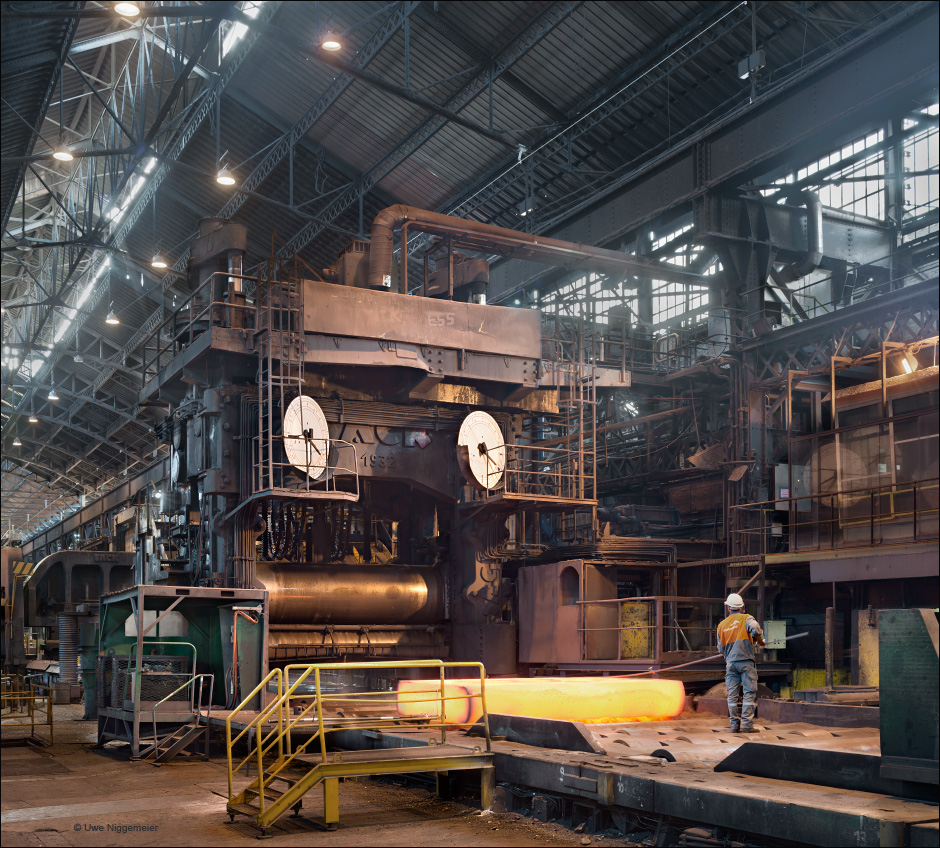
The steel mill was founded in 1867 by the Marrel brothers.
Main product were flat irons and armoured plates.
In 1932 a unique combined heavy plate rolling and forging mill was installed that is still in use today.
In 1974 Marrel Frères became part of the Creusot Loire group and eight years later the production of long rolled products was transfered to St. Etienne and after the bancruptcy of Creusot Loire the mill became part of USINOR.
In the following years the company changed it’s name frequently (Creusot Loire Industrie, CLI Fafer, Usinor Industeel). Today the site is part of Industeel producing the largest heavy plate in Europe.
369 Ton Steel Casting
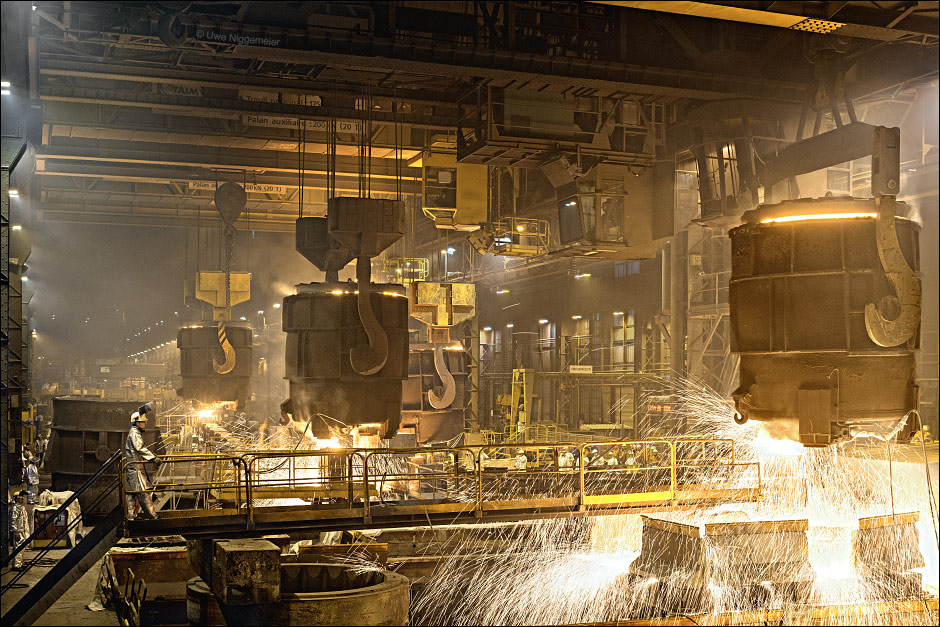
Casting the lower beam of a forging press from four ladles at Industeel in Le Creusot, France.
Further images.
The first iron works the „Royal Foundry“ started production in Le Creusot, France in 1782.
In 1836 Adolphe und Eugène Schneider took over the foundry and made it into the “French Krupp”, a factory producing speciality steels, locomotives, large weapons and machinery.
In 1876 the largest steam hammer worldwide (100 ton) was installed at Schneider & Cie .The first hydraulik press starts production in 1890.
In 1920 more than 20000 people are employed in the mill’s blast furnaces, open hearth shops, rolling mills, forges, foundries and mechanical shops.
Iron production is closed down in 1940.
From 1949 on the mills in Le Creusot are named “Société des Forges et Ateliers du Creusot (SFAC)”.
In 1952 a 7500-ton hydraulic press (a reparation from Germany) was installed.
The first nuclear power plant equipment is produced in 1954.
In 1970 the SFAC joins the “Cie. des Ateliers et Forges de la Loire” to form “Creusot-Loire Industries“.
In 1984 Creusot Loire filed bancruptcy and the steel and rolling mills were taken over by USINOR.In 1998 the Creusot steel activities were merged with the Belgian Fabrique de Fer de Charleroi to form Industeel.
Industeel Le Creusot today runs a 100 ton electric arc furnace, a 4 meter heavy plate mill and a steel foundry.
Industeel is part of ArcelorMittal since 2006.
Le Creusot
The steel industry produced a few mythical places in it’s about 200 years of history.
Sheffield, Essen, Bethlehem and Terni belong to those and certainly Le Creusot in France.
The first iron works the „Royal Foundry“ started production in Le Creusot in 1782.
In 1836 Adolphe und Eugène Schneider took over the foundry and made it into the “French Krupp”, a factory producing speciality steels, locomotives, large weapons and machinery.
In 1876 the largest steam hammer worldwide (100 ton) was installed at Schneider & Cie .The first hydraulik press starts production in 1890.
In 1920 more than 20000 people are employed in the mill’s blast furnaces, open hearth shops, rolling mills, forges, foundries and mechanical shops.
Iron production is closed down in 1940.
From 1949 on the mills in Le Creusot are named “Société des Forges et Ateliers du Creusot (SFAC)”.
In 1952 a 7500-ton hydraulic press (a reparation from Germany) is installed.
The first nuclear power plant equipment is produced in 1954.
In 1970 the SFAC joins the “Cie. des Ateliers et Forges de la Loire” to form “Creusot-Loire“.
A new 11300-ton press was commissioned in 1979.
In 1984 Creusot Loire filed bancruptcy and the steel and rolling mills were taken over by USINOR to become part of Industeel later. The forge and mechanical shops became part of SFAR Steel and were taken over by AREVA, world’s largest manufacturer for nuclear power plant equipment, in 2006.
Today two forging presses, 7500-ton and 11300-ton, and two huge mechanical shops are in operation.
The old 7500-ton press will be replaced soon by a new 9000-ton press.
Further images at stahlseite.de

